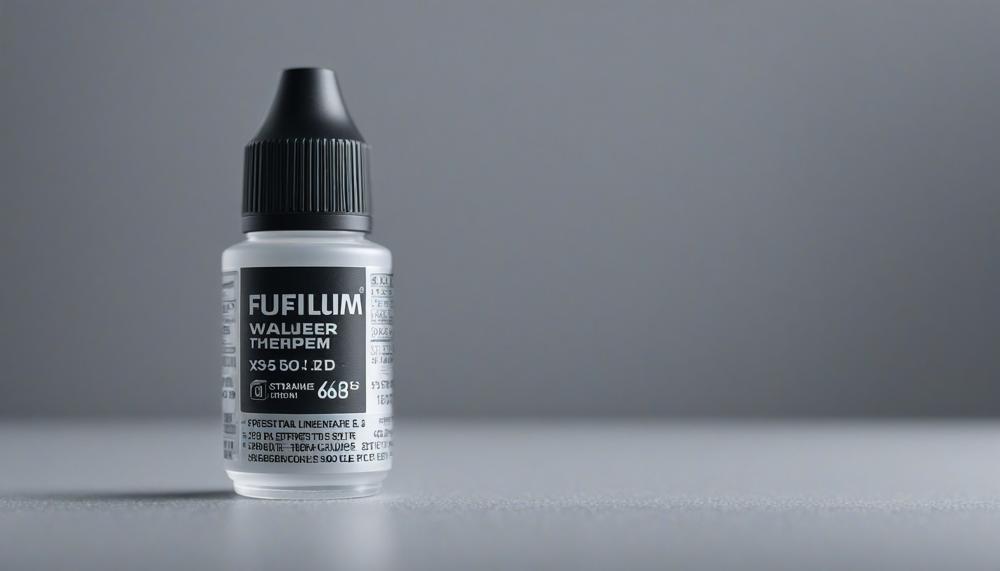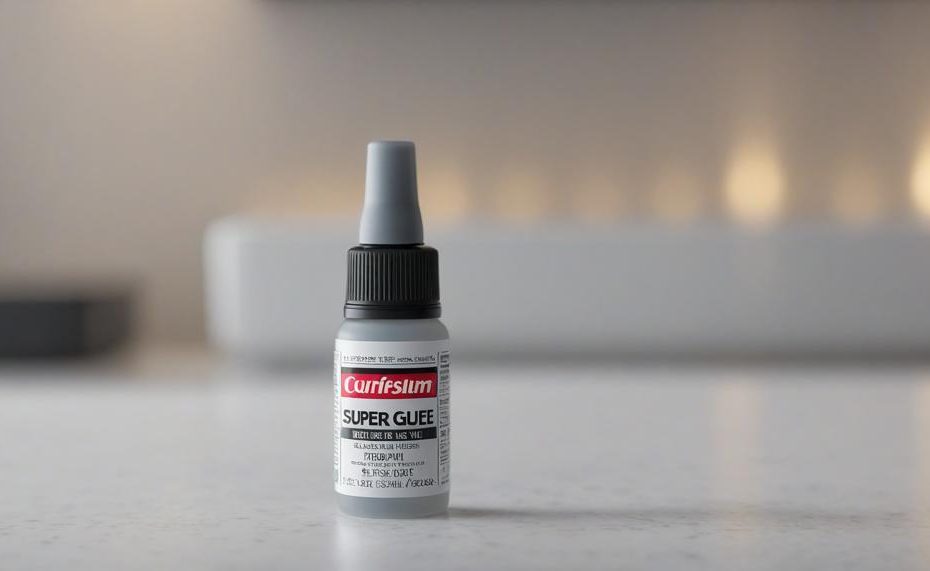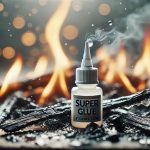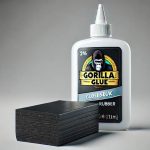Super glue, the go-to adhesive for quick fixes and small projects, boasts impressive bonding capabilities, but it’s not invincible. One critical factor that can compromise its effectiveness is temperature. So, at what temperature does super glue fail? The bond strength of super glue typically falters outside the range of -65°F to 180°F.
For optimal performance, the application temperature should be above 45°F, and once fully cured, it can withstand temperatures up to 220°F, particularly for high-temperature variants like Gorilla Super Glue.
Understanding these temperature constraints is crucial for ensuring your repairs hold up under different conditions. Whether you’re fixing a broken item at home or tackling a project that involves exposure to extreme temperatures, knowing when super glue will hold and when it will fail can save you time, effort, and frustration.
Key Takeaways:
- Effective Bonding Range: Super glue bonds well within -65°F to 180°F.
- Application Temperature: Apply super glue at temperatures above 45°F for proper bonding.
- Cured Resistance: Once cured, certain super glues can handle up to 220°F.
- Brand Variations: Different brands have varying temperature tolerances; Gorilla Super Glue is among the most resilient.
- Performance Impact: Extreme temperatures can weaken super glue bonds, so choose the right type and follow instructions.
By understanding these temperature thresholds, you can make informed decisions about when and where to use super glue, ensuring your fixes remain firm and durable.
Table of Contents
Does Super Glue Work in Cold Weather?
The short answer is that cold weather does indeed affect the effectiveness of super glue. Colder temperatures slow down the chemical reaction needed for super glue to bond properly. This results in weaker bonds and longer drying times.
To delve deeper, here’s a detailed look at how temperature influences super glue:
| Factor | Impact | Details |
| Bonding Efficiency | Reduced | Cold weather slows the chemical reaction, making the bond weaker and less reliable. |
| Drying Time | Increased | Lower temperatures extend the time required for super glue to cure fully. |
| Temperature Range | Critical | Super glue typically needs to be applied at temperatures above 45°F – 50°F for effective bonding. The optimal operating range is -65°F to 180°F. |
| Post-Cure Resistance | Stable | Once cured, super glue can withstand temperatures from -65°F to 220°F, with some brands like Gorilla Super Glue enduring up to 220°F. |
In cold weather, it’s advisable to bring the materials and glue to a warmer environment before application to ensure the bond forms correctly. For more information, you can refer to the Original Super Glue specifications and other manufacturer guidelines.
Is Super Glue Temperature Sensitive?
Yes, super glue is temperature sensitive. Temperature plays a crucial role in determining the strength and effectiveness of super glue.
| Temperature Range | Effect on Super Glue | Recommendations |
| Below 50°F (10°C) | Super glue becomes sluggish and may not cure properly. In extreme cold, it might not cure at all. | Preheat materials or surfaces. Use a warm bath for the glue before application. |
| 50°F to 77°F (10°C to 25°C) | Optimal temperature range for strong bonds and effective curing. | Apply glue within this temperature range for best results. |
| Above 77°F (25°C) | Super glue cures faster but may weaken if it hardens too quickly. Excessive heat can melt or weaken the bond. | Avoid hot surfaces and direct sunlight. Store glue at room temperature. |
Explanation:
- Cold Temperatures: When temperatures drop below 50°F (10°C), super glue’s chemical reaction slows down, making it sluggish. This can prolong the drying time and may even prevent the glue from curing properly. To ensure a strong bond, consider preheating the surfaces or materials and warming the glue slightly before application.
- Optimal Temperatures: The ideal range for using super glue is between 50°F and 77°F (10°C to 25°C). Within this range, the glue cures effectively, forming strong, durable bonds. This is the sweet spot where super glue performs best.
- High Temperatures: As temperatures rise above 77°F (25°C), super glue starts to cure faster. While this might seem beneficial, it can lead to issues if the glue hardens too quickly, compromising the strength of the bond. Excessive heat can also cause the glue to melt or weaken, reducing its effectiveness. It’s best to store and apply super glue at room temperature, keeping it away from heat sources and direct sunlight.
Does Super Glue Work In Below Freezing Temperatures?
Super glue, also known as cyanoacrylate adhesive, can still function in below-freezing temperatures, but its effectiveness is largely influenced by the temperature during application. Here’s a detailed look:
How Does Temperature Affect the Effectiveness of Super Glue?
Temperature plays a crucial role in the application and performance of super glue. Here are the key points:
- Application Temperature: The ideal temperature for applying super glue is generally above 45°F (7°C). At temperatures below this, the glue’s chemical reaction slows significantly, leading to longer curing times and potentially weaker initial bonds.
- Curing and Bonding: Once fully cured, super glue can withstand a wide range of temperatures. For example, Original Super Glue can handle temperatures as low as -65°F (-54°C) and up to 180°F (82°C). Gorilla Super Glue extends this range slightly, withstanding up to 220°F (104°C).
- Cold Weather Application: In cold environments, applying super glue can be challenging. The glue takes longer to set, and the bond may not form properly if the materials and the glue itself are below the recommended application temperature. Using a hairdryer or fan can help speed up the drying process in colder temperatures.
- Brand Variations: Different brands have different operational ranges. For instance:
- Original Super Glue: Operates between -65°F to 180°F.
- Gorilla Super Glue: Can withstand up to 220°F.
- Permabond 825: Can resist extreme temperatures up to 392°F.
- Post-Curing Performance: Once cured, super glue remains effective at low temperatures. It can maintain strong bonds in freezing conditions, provided it was applied and cured within the appropriate temperature range initially.
| Brand | Application Temperature | Service Temperature |
| Original Super Glue | Above 50°F (10°C) | -65°F to 180°F (-54°C to 82°C) |
| Gorilla Super Glue | Above 45°F (7°C) | -65°F to 220°F (-54°C to 104°C) |
| Permabond 825 | Above 50°F (10°C) | -65°F to 392°F (-54°C to 200°C) |
Does Gorilla Super Glue Work in The Cold?
Yes, Gorilla Super Glue works in the cold. It can handle temperatures as low as -65°F, making it effective even in freezing conditions.
How does the temperature affect the effectiveness of Gorilla Super Glue?
The effectiveness of Gorilla Super Glue is significantly influenced by the temperature. Here’s a detailed look at how temperature variations impact its performance:
| Temperature Range | Effectiveness | Details |
| -65°F to 32°F | Effective | Maintains bonding strength but requires longer curing time. Works well for most outdoor applications in cold climates. |
| 32°F to 180°F | Highly Effective | Optimal performance. Bonds quickly and strongly, suitable for everyday use. |
| 180°F to 220°F | Moderately Effective | Begins to weaken. Prolonged exposure to these temperatures can cause degradation. |
| Above 220°F | Not Effective | Breaks down and loses its adhesive properties. Not suitable for high-heat environments. |
Explanation:
- Cold Temperatures (-65°F to 32°F): Gorilla Super Glue remains effective, but the curing process slows down. You might need to hold the bonded items together for a longer period to achieve a strong bond. Despite the slower curing, the adhesive remains robust and reliable.
- Moderate Temperatures (32°F to 180°F): This is the ideal range for using Gorilla Super Glue. It bonds quickly and efficiently, providing a strong and durable hold. It’s perfect for everyday repairs and projects.
- High Temperatures (180°F to 220°F): The glue starts to lose some of its strength. While it can still hold materials together, prolonged exposure to high temperatures can cause the adhesive to weaken over time.
- Extreme Heat (Above 220°F): Gorilla Super Glue will break down and lose its adhesive properties. It’s not suitable for applications involving continuous exposure to such high temperatures.
Does Super Glue Dry in Cold Weather?
Cold weather significantly affects the drying process of super glue. The primary reason is that super glue, also known as cyanoacrylate, relies on a chemical reaction that requires warmth and moisture to activate and cure effectively.
In colder temperatures, this reaction slows down, resulting in longer drying times and weaker initial bonds. Here’s a detailed breakdown of how cold weather impacts the drying process of super glue:
| Aspect | Warm Weather | Cold Weather |
| Curing Time | Quick, typically within seconds to a minute | Slower, may take several minutes to even hours |
| Bond Strength | Strong and durable immediately after curing | Weaker initial bond strength, improves over time |
| Application Suitability | Ideal for most environments | Requires patience and possibly additional measures to ensure bond strength |
How Long Does Super Glue Take to Dry?

Super glue typically dries within seconds to a few minutes, but the exact drying time can vary based on several factors including the type of super glue, humidity, and temperature.
How does temperature affect the drying time of super glue?
Temperature plays a crucial role in the drying time of super glue. Here’s a detailed breakdown of how different temperature conditions impact the drying process:
| Temperature Range | Effect on Drying Time | Explanation |
| Low Temperatures (Below 15°C) | Slower Drying Time | At lower temperatures, the chemical reaction that causes super glue to harden slows down, leading to a longer drying period. This can also result in weaker initial bonds. |
| Room Temperature (15°C – 25°C) | Optimal Drying Time | Room temperature provides an ideal environment for super glue, allowing it to dry within seconds to a few minutes. The chemical reaction occurs at an optimal rate, ensuring a strong bond. |
| High Temperatures (Above 25°C) | Faster Drying Time | Higher temperatures accelerate the chemical reaction, causing the super glue to dry more quickly. However, excessively high temperatures can compromise the strength of the bond and lead to brittleness. |
Conclusion
Super glue, the household hero of quick fixes, shines under most conditions but has its limits. Temperature is a crucial factor in its performance. The sweet spot for super glue’s effectiveness lies between -65°F and 180°F. For the best results, apply it when the temperature is above 45°F. Once cured, certain high-temperature variants like Gorilla Super Glue can withstand up to 220°F.
Understanding these thresholds is vital for ensuring your repairs remain intact. When temperatures dip too low or soar too high, super glue’s bonds can weaken. This knowledge can be the difference between a lasting fix and a frustrating fail.
Different brands offer varying temperature tolerances, with some, like Gorilla Super Glue, known for their resilience. So, whether you’re mending a household item or tackling a more demanding project, keeping these temperature limits in mind ensures your repairs hold strong, no matter the weather. Cold conditions slow down the bonding process, so patience and the right environment are key.






